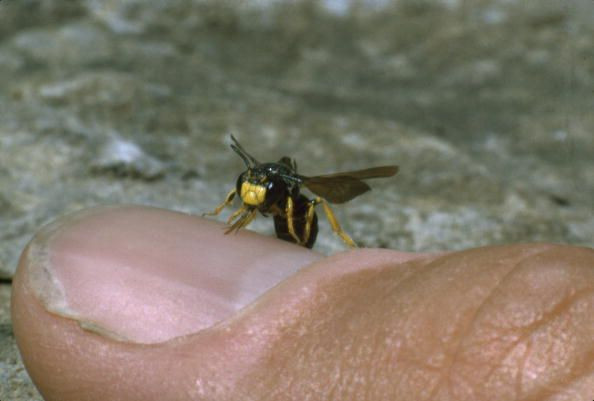Bees Added To US Endangered List; 7 Species Native To Hawaii To Receive Protection

Hawaii's bees are facing a dire existential threat and need our help, the government formally declared over the weekend.
The U.S. Fish and Wildlife Service announced its decision to place seven yellow-faced bee species native to the state under the protection of the Endangered Species Act in September 2016. Though there are ongoing discussions on whether to place another species of bee - the rusty patched bumble bee - under its protection, the current additions represent the first bees in America listed as endangered. The bees, along with the three native animal and 39 plant species also newly added to the list, have been afflicted by multiple factors.
Specifically for the bees, these dangers include "feral pigs, invasive ants, loss of native habitat due to invasive plants, fire, as well as development, especially in some for the coastal areas," Sarina Jepson from the Xerces Society, a non-profit Portland-based conservation group, told the AP.
The Xerces Society has been leading the charge to have the bees placed onto the list for the better part of the decade, Karl Magnacca, a Hawaii-based entomologist who has worked with the organization, told the AP.
Bees, in addition to providing our large stores of honey, help pollinate many of the nation's crops. Though the majority of this work is performed by commercially raised bees, native and wild bee species also play a pivotal role in our agricultural economy. It's estimated that native pollinators overall contribute more than $9 billion annually, Eric Lee-Mäder, pollinator program co-director at the Xerces Society, told the AP.
Much has been made of the sharp decline in commercial honeybee numbers in recent years, with some forecasting an impending great bee die-off. But as of late, new strategies in hive management and pesticide regulations have largely warded off any collapse of the bee economy.
It's less certain, however, how to protect and restore wild bee populations such as the ones found in Hawaii. While moving the bees to the Endangered Species list will not designate any specific area of land to be protected, it will let government officials enact recovery programs, access funding, and limit any harmful activity from outsiders, according to Gregory Koob, a conservation and restoration team manager for the Fish and Wildlife Service in Honolulu.
Protecting the bees will in turn protect the many species of native plants they pollinate, and vice versa. It will also safeguard the collective health of the state's ecosystem.
"Those plants are not only food and nesting habitat for the bees, but they also provide habitat for other animals," Koob said. "It's the web of life."
Published by Medicaldaily.com



























